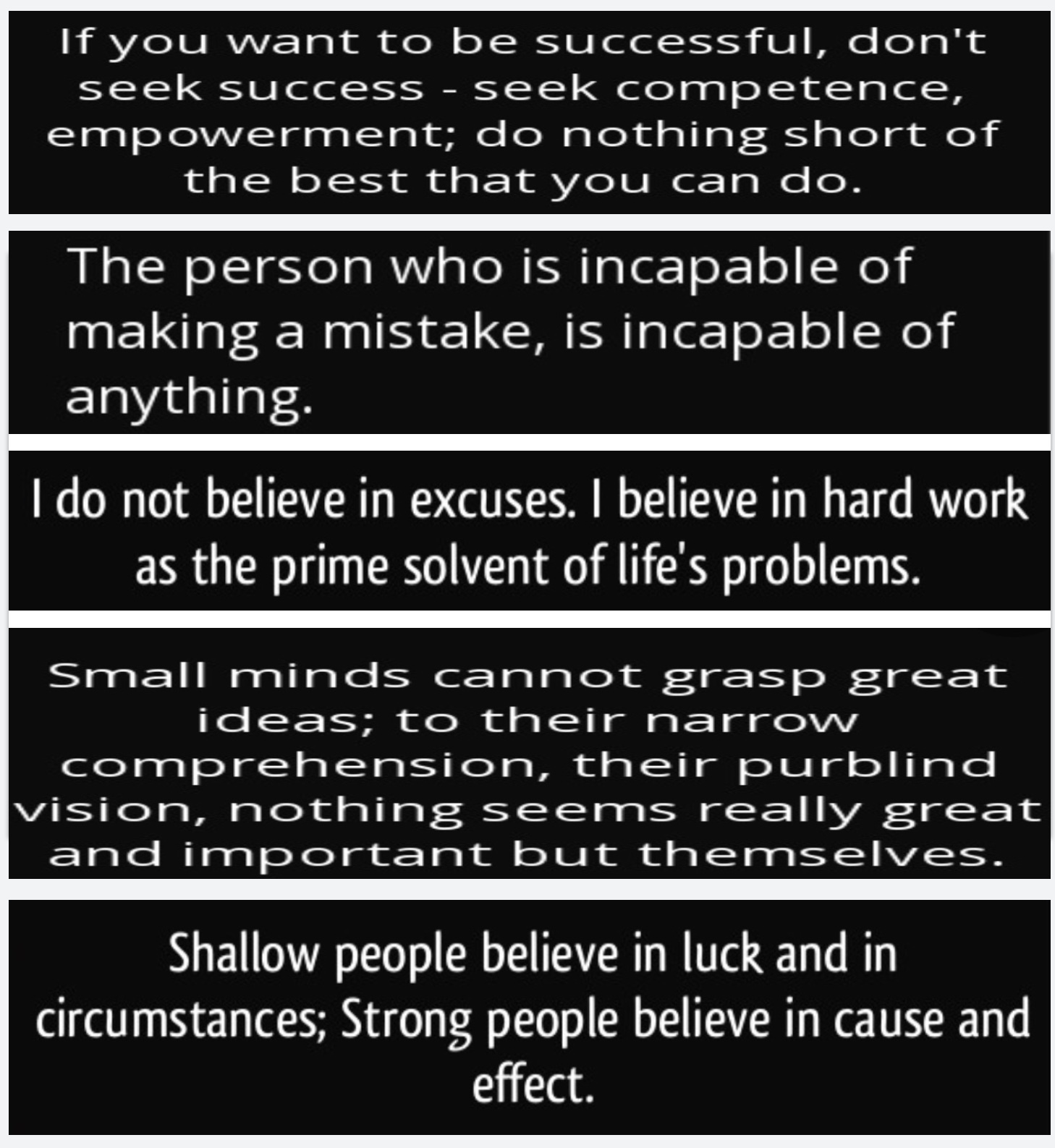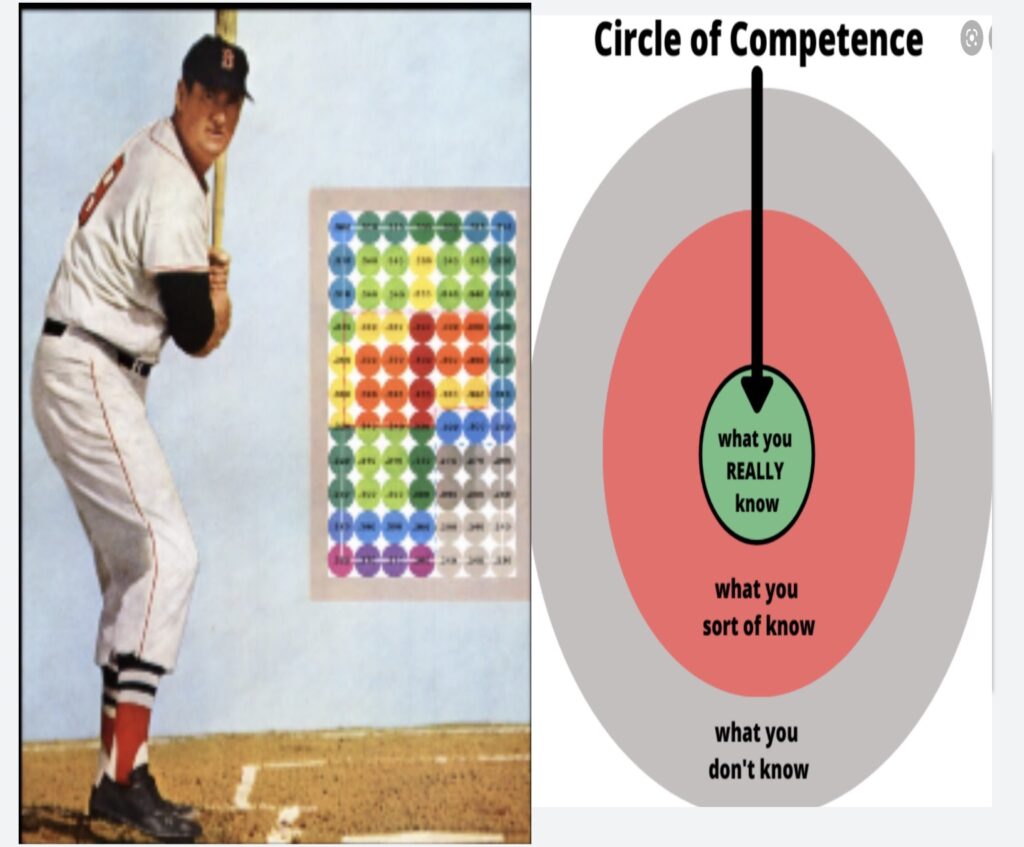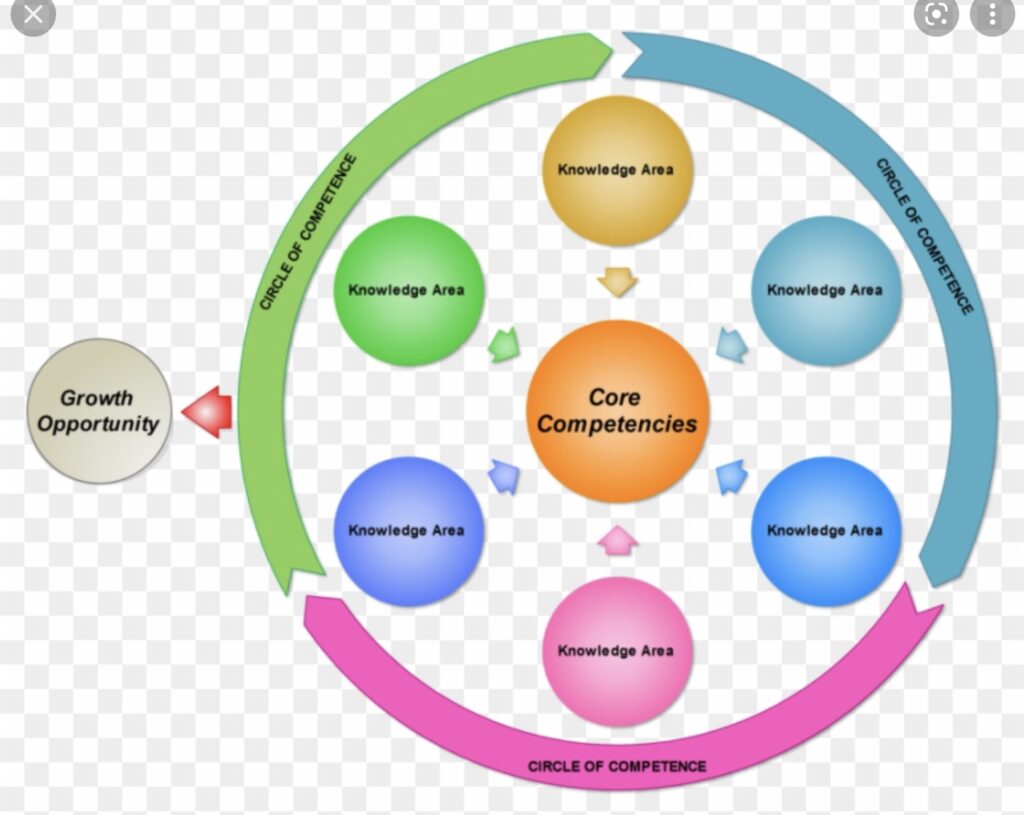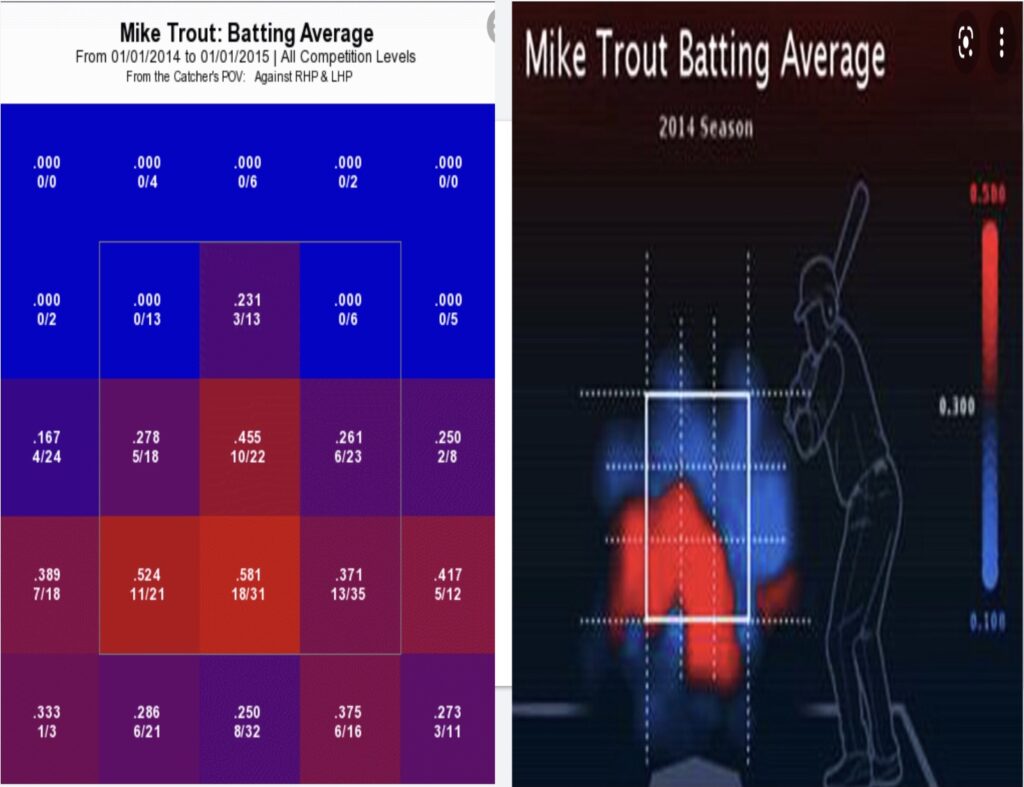
YOU ARE ONLY AS GOOD AS THE PITCH YOU SWING AT.
KNOW YOUR HOT ZONES AND SWING THERE MORE OFTEN.
DON’T CHASE NOR EXPAND THE ZONE ESPECIALLY ON PITCHES YOU STRUGGLE WITH ANYWAY.
Generally hitters hit better towards the middle of the zone.
So it is no coincidence that MLB hitter’s swing at roughly 75% of pitches that are thrown middle-middle of the strike zone (aka “the heart of the plate”, down the gut, dead RED).
Likewise, MLB hitter’s swing at 50% of pitches thrown around the heart of the strike zone (aka the edges, on the paint, borderline, on the shadows).
But get this, MLB hitter’s only swing at pitches OUT OF THE ZONE (aka chase) 25% of the time.
To be a great hitter, you MUST have a swing approach that allows you to swing at GOOD PITCHES IN THE HEART OF THE STRIKE ZONE and AVOID CHASE PITCHES OUT OF THE ZONE.
GETTING A GOOD PITCH IS KNOWING YOUR CIRCLE OF COMPETENCE
Ted Williams understood that making good decisions within his circle of competence improved his odds as a hitter. If he waited for a pitch that was in his sweet spot, he would get a hit over 40% of the time. But if he swung at pitches on the lower corners and on the edges and in the shadows of the strike zone then his odds would drop 15% and he would only get a hit 23-25% of the time.


Waiting for a good pitch requires knowing which pitches offered him the highest odds of success and the patience and discipline necessary to wait for them. Whether a M.L.B. baseball player or not, WE ALL HAVE A ZONE WHERE THE ODDS ARE TILTED IN OUR FAVOR, CALLED OUR CIRCLE OF COMPETENCE.
MAKING DECISIONS WITHIN OUR CIRCLE OF COMPETENCE IMPROVES THE ODDS WE WILL DO WELL. This is our sweet spot and an area which we are capable of understanding with a high degree of probability the relevant variables and the likely outcomes.

KNOWING THE BOUNDARIES OF OUR CIRCLE OF COMPETENCE IS MORE IMPORTANT THAN ITS SIZE. “It is not competency if you do not know the edge of it”. Warren Buffet wrote about investing, “if we have a strength it is in recognizing when we are in our circle of competence and when we are approaching the edge…. We just stick with what we understand”.
USING DATA ON MIKE TROUT AS AN EXAMPLE
In 2013/2014, when Mike Trout was struggling and expanding the boundaries of his circle of competence, he had some of his worst months at the plate, it got a lot of analysis. The PURPOSE OF USING Trout’s information when he was struggling is for illustrative purposes ONLY so we can use similar reasoning to look at our hitters and figure out their circle of competence rather than to make any conclusions about Mike Trout. We all know he is SUPERMAN and micro-analysis of his every move probably does not phase him one bit because his expectations of his performance is far greater than any criticism.
Let’s take a deeper look at a small sample size of Mike Trout’s struggles from 2012-2014. Trout tends to like his “heart of the strike zone” and expands the heart even down to the edges or shadows or borderline of the lower part of the strike zone. See the heat map below and listen to his explanation in the video of him explaining why he likes the down pitch.
With Trout, since he really likes the pitches down in the zone, it is no surprise that he struggles with pitches up in the zone.

The most telling stat of Trout’s struggles is on pitches up & in —he is not producing much hard contact at all- in fact, he is near the bottom of all hitters on producing hard contact on the UP & IN/VELOCITY. The data in 2014 suggests that pitchers/opposing teams had figured out that Trout was struggling with velocity up & in and thus he was being pitched there more frequently.
Trout recognized this trend too and his struggles and in the video below he discusses with A-Rod his plan/approach to fix it.
Because Trout understands his swing mechanics, AND KNOWS HIS STRENGTHS & limitations, and knows how pitchers are attacking him, he is ABLE TO CUSTOMIZE HIS SWING APPROACH TO EXPAND HIS “HEART” for the lower part of the strike zone and SHRINK IT to be smaller at the top of the zone.
Being able to get on plane and have a barrel path that is adjustable to match the incoming pitch angle gives the hitter a wider margin of error to make more consistent contact with the ball.
Designing and executing a SWING APPROACH or a HITTING PLAN can provide substantial opportunities for improvement. IT STARTS WITH THE RIGHT INFORMATION that matches SWING MECHANICS/ ADJUSTMENTS (physical characteristics) with SWING APPROACH (hunting pitches).
Big improvements can be had by just pairing the right information. SWINGING AT PITCHES THAT YOU HAVE ALREADY PROVEN YOU DO DAMAGE ON is obviously the easiest way to make the fastest, easiest improvements. So basically matching YOUR HOT ZONES WITH YOUR HIGHEST SWING PERCENTAGES.
Likewise, knowing and keeping track of EVERY SWING & MISS – pitch type, velocity, location is critical too. So if your SWING & MISS PERCENTAGE (aka WHIFF %) is high and is in the same neighborhood as your SWING %, then you need to start taking that pitch and find a NEW HOT ZONE.
KNOWING YOUR HITTER’S PROFILE: STRENGTHS & WEAKNESSES
Here are some ideas of data/information that matters when figuring out your circle of competence and determining what a good pitch is for you:
- Batting average on balls in play – BABIP;
- Strikeout rate, swing & miss, whiff %; K-rate %;
- Number of whiffs ratio to number of actual swings;
- Batted ball rate splits: line drive, ground ball, fly ball %;
- FLY BALL & POP UP rates/% measured with bat speed/exit velocities;
- % of pitches swung at out of the strike zone versus % of pitches swung at in the heart of the zone;
- Hard hit balls – exit velocity/bat speed;
- Strike zone contact rate;
- Swinging strike rate;
- Performance (whiffs, hard hits, bat speed, exit velocities, launch angles & outcomes) against hard stuff, breaking stuff and off speed.
- Performance data according to ZONE-wise by location.
Earlier in this article (above) are examples of charts and heat maps that illustrate and document the relevant data points just listed; there are also graphs that illustrate and document some of the same relevant data points that we just listed. I love the data and the graphs and sifting through the numbers but I also think it is critical to have the high speed video synched up with objective measurements. I like BOTH TOGETHER.
For our own internal scouting purposes of our own hitters and in order to devise hitting plans/approaches, we can figure out whether our hitter is “hunting” more of the inside or outside part of the zone for instance, by just looking at the percentage of swing probabilities for each certain location. And we can also figure out the probability of whiff or hard contact for each certain location too. Then in practice and during simulated scrimmages, etc. we can train swing decisions after conducting a thorough evaluation of the strength and weaknesses for each player.
Understanding your player’s swing mechanics is step one. Then KNOWING HIS/HER STRENGTHS (circle of competence) and knowing how pitchers are attacking him/her is the next progression. Then at practice, test yourself or your hitter to determine whether he/she is ABLE TO CUSTOMIZE HIS/HER SWING APPROACH TO EXPAND HIS/HER “HEART” &/or whether he/she knows their BOUNDARIES and then train them to SHRINK IT.
So, with all of your hitters, it is important to know the hitter’s peak exit velocity in relation to their launch angle; for instance, in baseball if the hitter’s peak exit velocity is under 100 m.p.h. then his launch angle should be between 5-15 degrees. The greater the exit velocity then there can be incremental increases in barrel path BUT if the hitter’s peak exit velocity &/or bat speed is lower than most others, then the barrel path needs to be flatter. Why? Exit velocity and bat speed give the coach an indication of the distance the batted ball will travel. The lower the exit velocity and bat speed measure then the less chance for home runs and gap to gap power, meaning balls hit in the air are usually going to be routine pop ups and outs.
DESIGNING & EXECUTING A HITTING PLAN
It is also important to remember that HARD HIT BALLS are batted balls hit within 10 percent of the hitter’s peak exit velocity. Knowing your hitter’s HARD HIT %, AVERAGE LAUNCH ANGLE & AVERAGE BATTED BALL DISTANCE is critical when designing and practicing a hitting plan.
Designing and executing a HITTING PLAN can provide substantial opportunities for improvement. IT STARTS WITH THE RIGHT INFORMATION that matches SWING MECHANICS/ ADJUSTMENTS (physical characteristics) with SWING APPROACH (hunting pitches).
Swinging at pitches that you PROVE you can do damage on in practice and during your preparation is step number one. Actual game-like, simulated, realistic pitches are the key to growth and development — not hitting off of a batting tee for 30 minutes nor taking front toss or meatballs pipped down the middle and playing home run derby to feel good. Listen to Brandon Lowe talk about his preparation:
PURSUE EXCELLENCE & WIN THIS PITCH!
